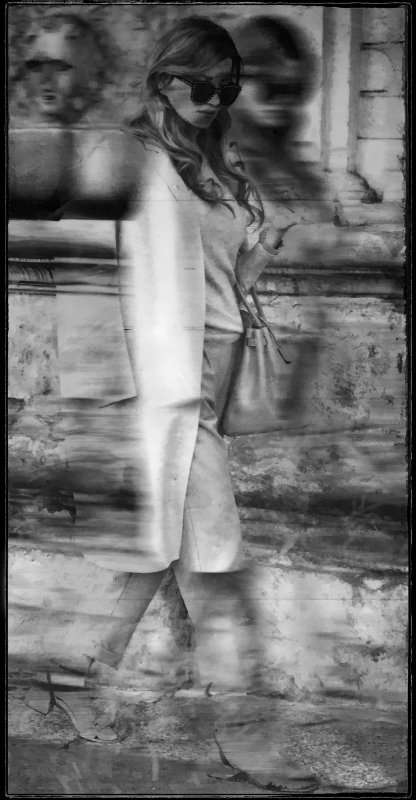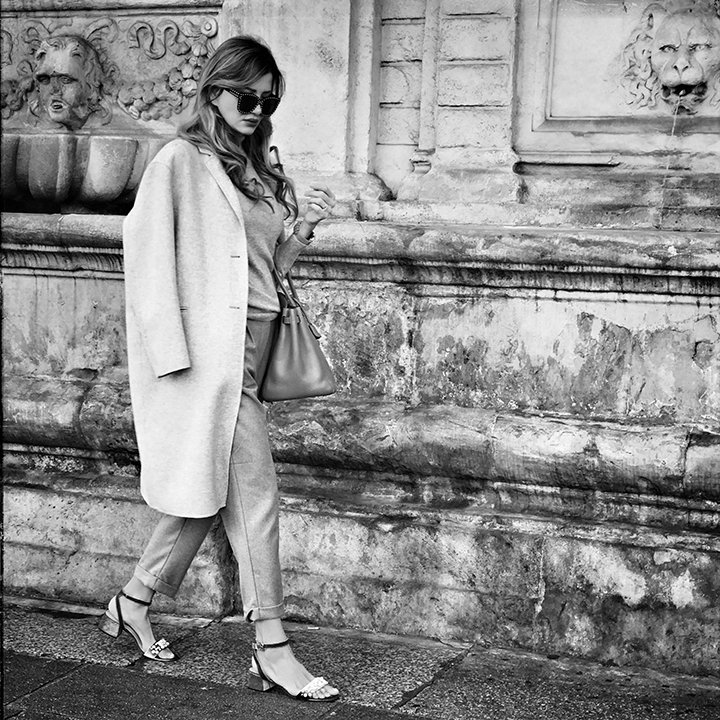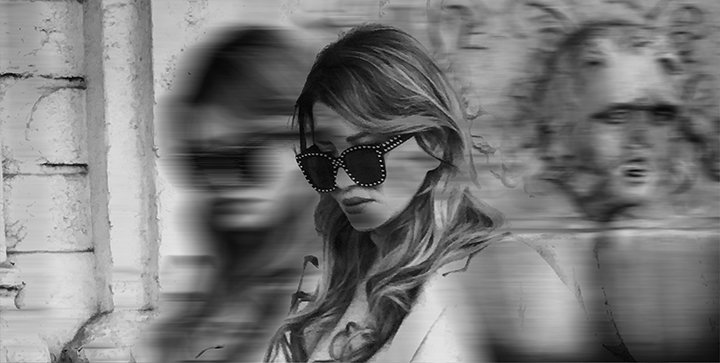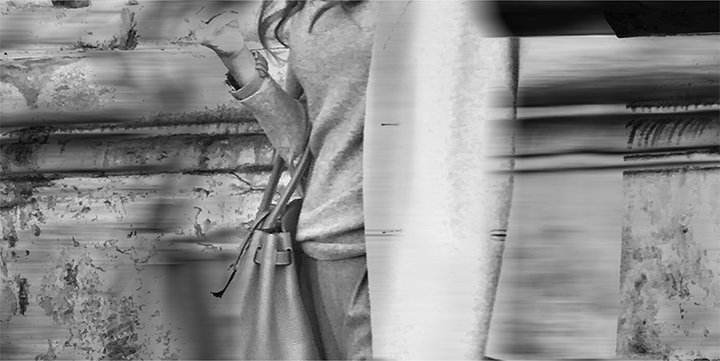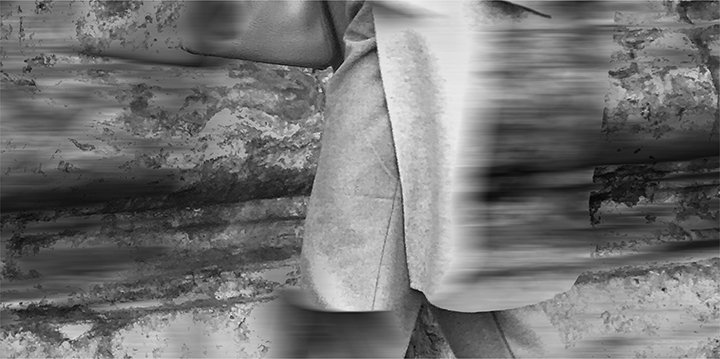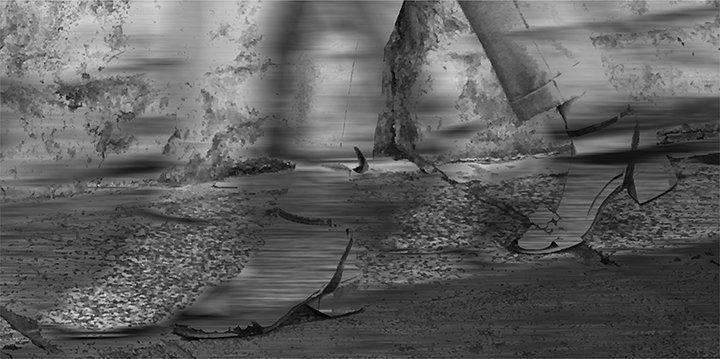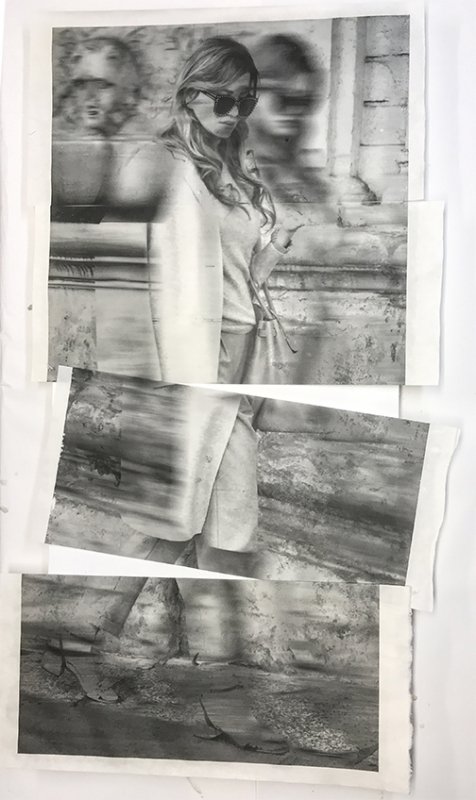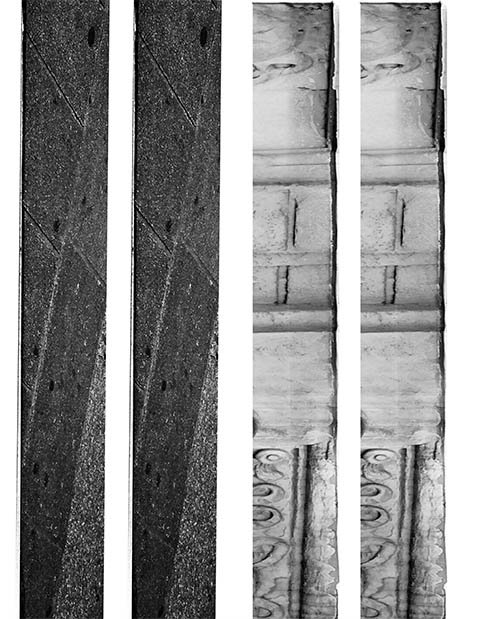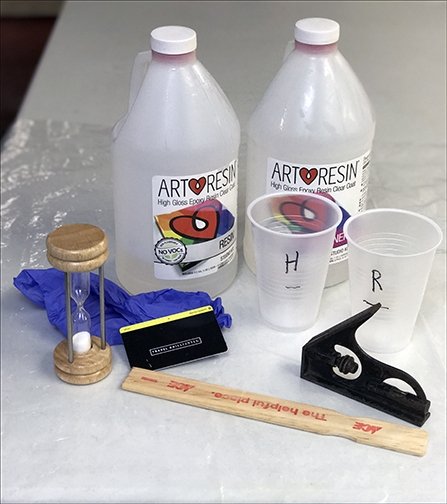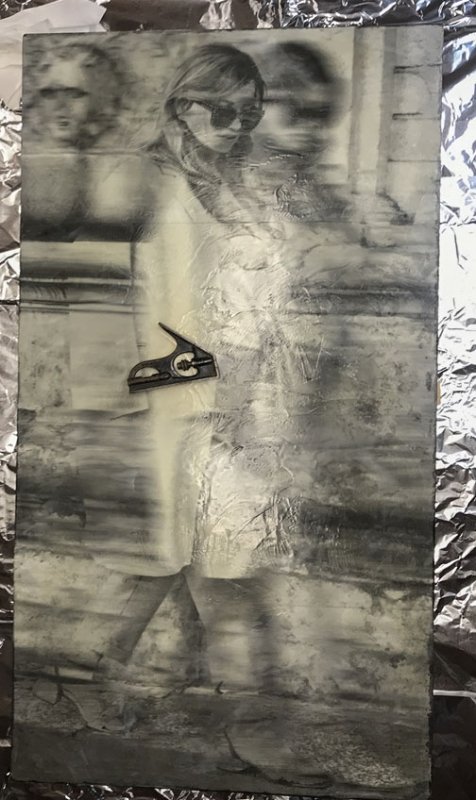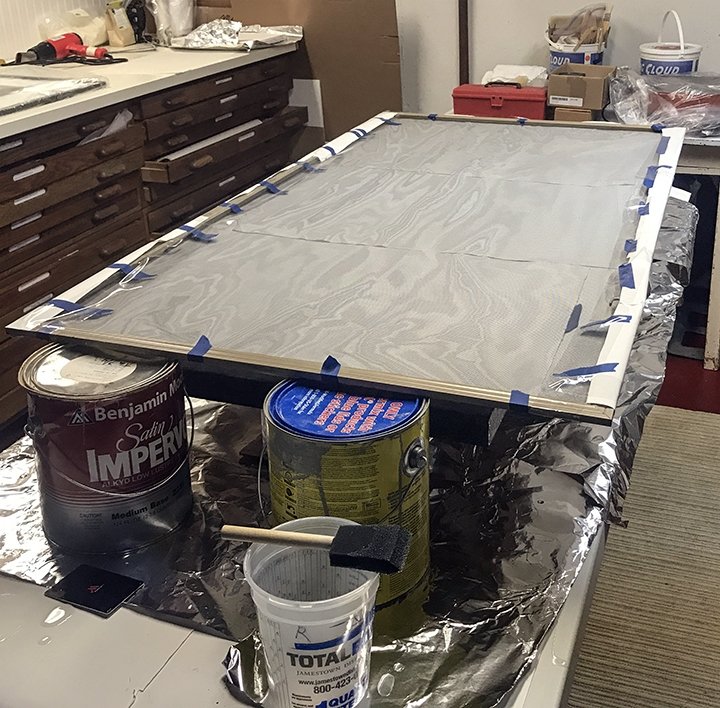Duxbury Art Association Winter Juried Show 2019 La Bella Donna, Bologna, Italy
Wed, January 16, 2019
Preparation of the substrate: Art materials are costly. Sometimes
I “repurpose” frames or wooden panels. If a panel was used as a substrate for
encaustic work, the wax can be melted, and the paper scraped off to the bare wood
surface. It’s a messy job, but when it’s done, the panel is primed with
encaustic gesso.
Computer editing: My “start photo” is a figurative subject from a series of street photos in Bologna, Italy. I cropped it to fit a 41" x 20" x 1.5" panel, making computer edits to create a sense of movement and reflection. Dividing the image into four sections—and reversing the direction— I printed each onto DASS™ transfer film.
Transfer printing and attaching to substrate: Using Purell® as a transfer medium, I transfer printed each of the four sections to separate sheets of mulberry paper. On the panel, a base encaustic layer creates a bed for the paper sections to be fused into the wax. With large work, the trick is to eliminate air pockets by popping blisters and refusing with a tacking iron. The side strips were fused with wax in the same way, matching edges to the front sections.
ArtResin™ is a two-part compound that hardens to a clear glossy finish. It can be used to create a durable coating over various substrates. I’ve used it on The Mannequin Project photos mounted to birch panels —see Blog #26. When applied over encaustic wax, much of the wax texture is lost, but the resin provides a protective finish and “pops” the black tones of the image. I rigged a "dust screen" to allow the resin to cure for 72 hours.
